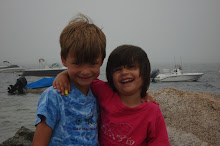
I'm reading this right now, which is an interesting meditation on early horror stories and how they shaped popular culture in the 19th century. So far, I'm most interested in how certain authors have come up with their material. One section postulates how Mary Shelley came up with the story for Frankenstein. It started as a dream image during the cold summer of 1816. She was holed up indoors, listening to her husband in his long discussions with Lord Byron on matters of politics, technology and philosophy, including the nature of life itself.
In an introduction to the 1831 edition of her novel, she writes, "Invention...does not consist in creating out of a void, but out of chaos; the materials must, in the first place, be afforded."
I love that. A story must be created out of a chaos of impulses and influences. In her case, the primary influence was the contemporary belief, or perhaps the fear, that science would be able to create life. And that's what she did. She gave life to a character that will never die.
The book discusses such characters as Dr. Jeckyl and what he has to do with Jack the Ripper, specifically, how the story informed the public's views of what sort of person could be a serial killer. In fact, an actor playing the notorious Dr. Jeckyl had to cut his run short because people in the audience kept fingering him to authorities as Jack the Ripper. How annoying. In another chapter the book details the relationship between the Dracula story and the attempted liberation of women. Can't wait.






1 comment:
Interesting. Does the book discuss precursors to Dracula and any roots the book might have in Irish culture? I've always found it interesting that two of the most important vampire novels of the nineteenth century were written by Irishmen (Le Fanu, Carmilla). But could be just a coincidence...
Post a Comment